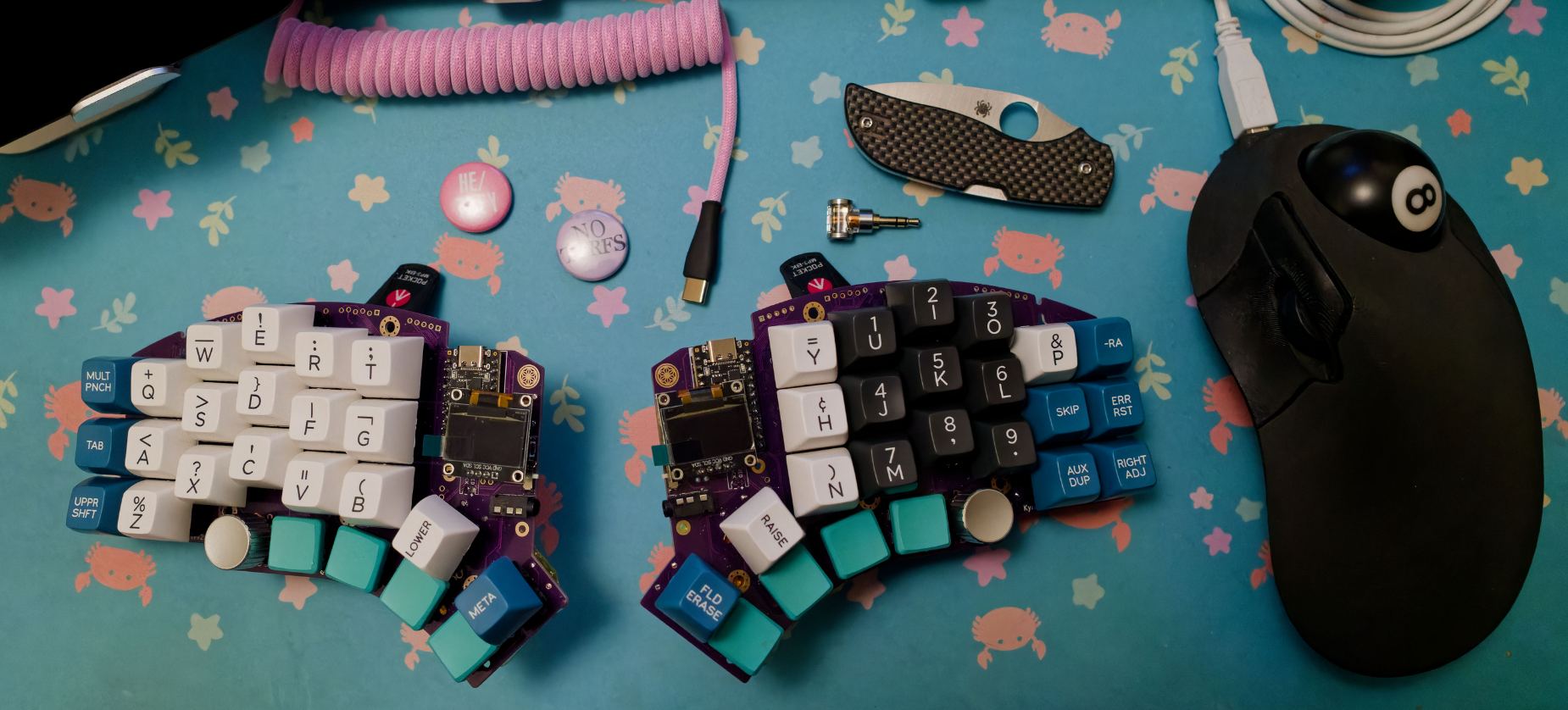Case (I have not bought any, I’ve just made a wooden panel, cutting it ad hoc), but I may buy one in the future or 3D print one, let me know what you think about it.
This looks great. You can also use adhesive-backed foam for a really low profile (while not scratching up your desk)
When I keep them pressed they are not recognized and I have to repress them. I don’t think it is a firmware issue, because I have tried different configurations in ZMK and now all of them fail with the same keys, independently of whatever character I map on those keys. I am thinking that it maybe due to some diode that may be missoldered or some pin in the controller, because the first days it worked fine.
Could be some cold joints, it's not unusual for them to work fine at first and then start to fail later on. Check the soldering on the affected keys and diodes and reflow anything that looks supect. You can also ask in the SplitKB discord to find out which controller pins should be checked based on the keys where you're seeing issues.

If you build using nice!nano controllers, you can get batteries that fit neatly under the (socketed) controller, you can just tuck it in there loose or tape it in place. If you use those batteries, which are very small, it's best to build the board without any power-drawing features, such as LED illumination or OLED display. Most PCBs that are designed for batteries will put contacts in that vicinity, or you can wire the batteries directly the nice!nanos.
If you build this way, there's no impact on the external size or portability. If you want to use larger batteries, you will need to make room in the case for them, if you're using a case. [I have some chunky batteries taped to the bottom of my caseless Kyria, which is obviously not doing anything good for portable use or aesthetics, but it does work.)
If you haven't used ZMK before, that will be a bit of a transition. ZMK is great, and in some ways it's a much more elegant solution than QMK, but it can be a little tricky to get used to at first and if anything goes wrong, troubleshooting is usually more annoying.
For portable use, a PCB that supports a power switch to disconnect the battery from the controller is kind of essential IMO, since without a hardware switch, there's no way to turn the board off or put it to sleep. So if it's in your bag, it'll constantly be waking up and connecting to your phone if paired.